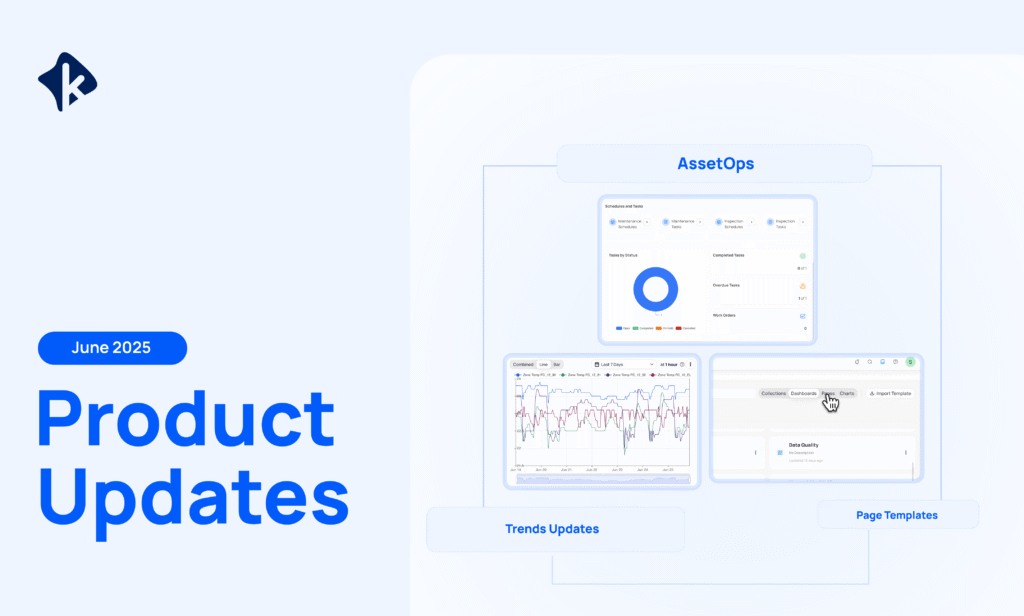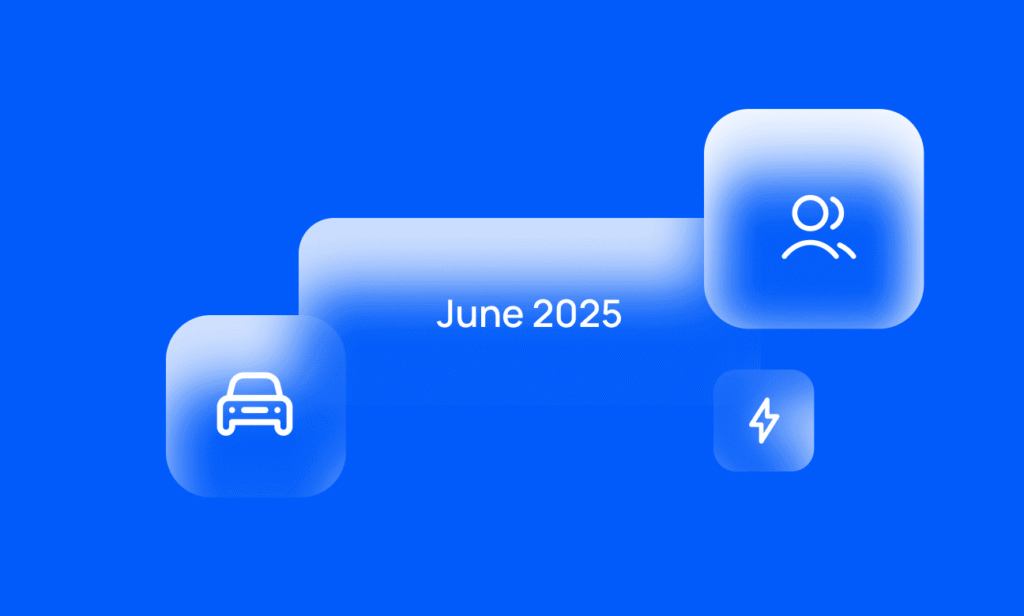By Saurabh Jain
On this page
Sign up to our newsletter
Subscribe to receive the latest blog posts to your inbox every week.
By subscribing you agree to with our Privacy Policy.
Smart buildings are rapidly transforming the landscape of real estate management. Through advanced technologies and a vast network of interconnected systems, they offer unprecedented efficiency, comfort, and sustainability. At the heart of all these benefits lies data, a continuous stream of information generated by sensors, IoT devices, and integrated systems.
Why is data so transformative in real estate? Unlike many industries, real estate has historically faced challenges such as operational inefficiencies, siloed systems, and high energy consumption. Traditional buildings often rely on static schedules or manual interventions, which can lead to wasted resources and inconsistent tenant experiences. Smart buildings address these challenges by turning raw data into actionable insights, enabling operators to make informed, proactive decisions that optimize building performance and enhance satisfaction.
This article will explore how smart buildings collect, normalize (i.e. standardize), and leverage data to optimize operations, along with the long-term impact of data-driven decisions.
What defines a smart building?
A smart building goes beyond traditional infrastructure by integrating technology that enables it to monitor, control, and optimize various aspects of its environment. Equipped with systems that communicate in real time, these buildings can adjust HVAC, lighting, indoor environmental quality (IEQ), security, and more based on actual conditions and occupancy needs.
For example, imagine a building where occupancy sensors detect that a large conference room is empty after a meeting ends. In response, the building automatically adjusts lighting, reduces airflow from HVAC systems, and conserves energy until the room is occupied again. Similarly, during peak energy demand periods, the building can dim non-essential lighting or adjust temperature setpoints to reduce costs while maintaining comfort. These automated adjustments ensure resources are used efficiently.
Data is the backbone of these adjustments, empowering building operators to make informed and proactive decisions that enhance tenant comfort, reduce energy consumption and streamline maintenance. Smart technology can significantly improve a building’s operational efficiency, but these improvements are reliant on how effectively the building can collect and use data.
At KODE Labs, where I serve as a Data Scientist specializing in Building BI, my role centers on unlocking the potential of this data to drive operational excellence. Building BI, our platform akin to Power BI or Tableau but tailored specifically for smart buildings, ensures stakeholders access actionable insights seamlessly.
How device and system data is leveraged in smart buildings
In smart buildings, valuable insights are gathered from a diverse range of sources, providing a comprehensive understanding of the building’s environment. These data sources work together to create an intelligent system that continuously monitors and optimizes building performance. Some key methods of generating these insights include:
Building Management Systems (BMS): By integrating the main building systems, BMS ensures that data from all these sources is gathered, ready for analysis and action.
Sensors and IoT devices: These devices are the building’s “nervous system”, constantly monitoring parameters like temperature, humidity, occupancy, air quality, and energy usage.
Utility Meters and Access Control: Data is also gathered from utility meters, access control systems, elevators, and more. This information provided insights into usage patterns and utility data, enabling tailored adjustments to reduce energy consumption.
Advanced Systems: Cutting-edge technologies, such as digital twins, can simulate and monitor a building’s operations in real time, adding another layer of data-driven insights.
Collectively, these data sources provide a 360-degree view of the building’s environment. They enable operators to identify inefficiencies, optimize conditions in real time, and make proactive adjustments.
However, this wealth of data can only be as effective as the systems interpreting it. Without tools to analyze and act on the information, data remains underutilized. That’s where platforms like KODE OS come in, connecting and transforming raw data into actionable insights.
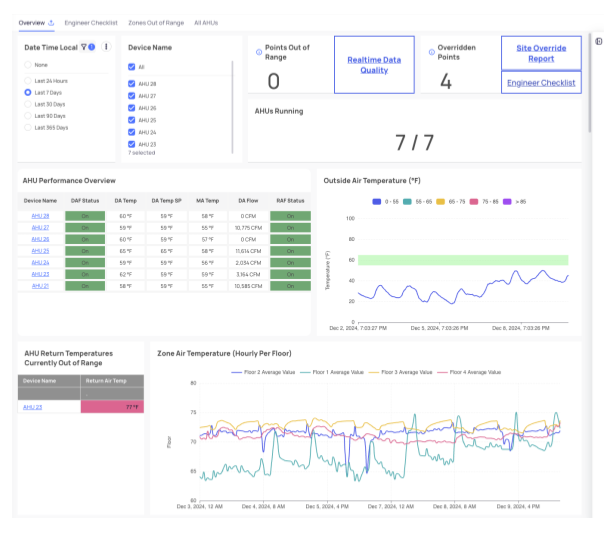
Standardizing and normalizing data for usability
With vast amounts of data flowing from multiple systems, a key challenge is making sure it remains usable. Raw data comes in different formats, making it difficult to analyze without first going through normalization processes.
The problem with unstandardized data
Consider a building with multiple HVAC units from different manufacturers. Each unit might report data using different formats, labels, or units of measurement. While one might log temperature as Fahrenheit, another might use Celsius. Lighting systems might report brightness as percentages, while HVAC systems track energy use in kilowatts. These inconsistencies make it nearly impossible to compare or analyze data effectively across systems
How data normalization solves the problem
Data normalization transforms raw, inconsistent data into a unified format, creating a clear structure across all sources. Platforms like KODE OS transform raw data from these various sources into a single, normalized format. The standardized data can then be accessed and interpreted in real time, ensuring reliability and enabling advanced analytics.
Normalized data allows these different systems to work together seamlessly. In my role, I lead efforts to refine this data pipeline, ensuring that normalized data fuels interactive dashboards, comprehensive reports, and predictive tools within Building BI. Through these processes, data becomes accessible and actionable enabling operators to derive meaningful insights that drive efficiency and improve tenant comfort.
A practical example
Imagine a property team analyzing energy consumption across a portfolio of buildings. Without normalized data, comparing energy usage metrics across sites would involve hours of manual conversion and reconciliation. With KODE OS, operators can view normalized data instantly, filtering by building, floor, or even individual devices, and use these insights to optimize schedules, reduce energy waste and prioritize maintenance.
By ensuring data is accurate, consistent, and ready for analysis, normalization not only enhances operational efficiency by also lays the foundation for advanced analytics, machine learning and AI applications that drive long-term transformation.
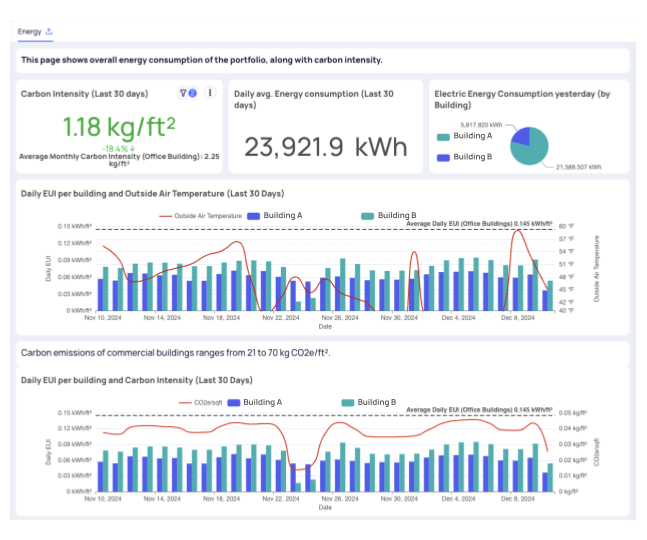
How data optimizes operations
When data is normalized, it transforms into a powerful resource for building operators, enabling them to enhance operations across several critical areas:
Real-time monitoring and adjustments: With access to live data, operators can monitor conditions and make immediate adjustments to ensure tenant comfort and operational efficiency. For instance, if occupancy sensors show that a conference room is vacant, HVAC systems can reduce airflow, cutting energy costs.
Proactive maintenance: Data collected allows operators to shift from reactive to proactive maintenance. Solutions like Fault Detection & Diagnostics (FDD) and Digital Commissioning can identify potential issues before they lead to failures. This proactive approach helps avoid costly breakdowns, ensures equipment longevity, and minimizes disruptions.
Energy and cost savings: Data-driven adjustments help reduce operational costs and energy waste. Building operators can analyze data trends to optimize HVAC and lighting schedules, reducing energy consumption based on real time occupancy and external conditions.
Utilizing building and portfolio data to fine tune building operations not only lowers costs but also enhances tenant comfort and satisfaction, impacting key drivers of long term success for any property.
The long-term impact of data-driven decisions
Beyond the day-to-day efficiencies, the strategic use of data empowers long term benefits such as:
- Artificial Intelligence & Machine Learning: As data collection and usage mature, machine learning can predict trends and automate complex decisions, creating a building that anticipates needs and responds accordingly.
- Extended equipment lifecycle: Data insights allow operators to manage assets more efficiently, extending equipment life through timely maintenance and optimized performance.
- Environmental benefits & compliance: By optimizing energy use and reducing waste, smart buildings lower their carbon footprint helping them meet environmental regulations and achieve sustainability goals.
- Value to stakeholders: Data-backed decisions bring long term value to all stakeholders. Owners benefit from reduced operational costs and increased asset value, while tenants enjoy improved comfort, safety, and convenience. For property teams, data helps streamline workflows and enhances transparency.
- Scalability for future growth: A well-architected data infrastructure not only addresses current needs but also positions buildings for future scalability. As smart building portfolios grow, this scalable foundation ensures that insights remain accurate and actionable across assets.
By using data strategically, smart buildings move beyond operational efficiency to deliver long-lasting value. Platforms like KODE OS empower teams to leverage data at every level, ensuring that benefits of smart buildings extend into the future.
The role of Building BI in driving transformation
As the lead data analyst for the Building BI module at KODE Labs, my work focuses on designing intuitive dashboards, integrating client-specific KPIs, and delivering actionable insights tailored to smart building environments. Our platform empowers stakeholders—property teams, owners, and tenants alike—with:
- Customizable visualizations: Tailored reporting tools for energy performance, tenant comfort, and operational efficiency.
- Predictive analytics: AI-driven insights for maintenance, energy optimization, and space utilization.
- Portfolio management: Unified data across multiple properties, enabling comparative analysis and strategic decision-making at scale.
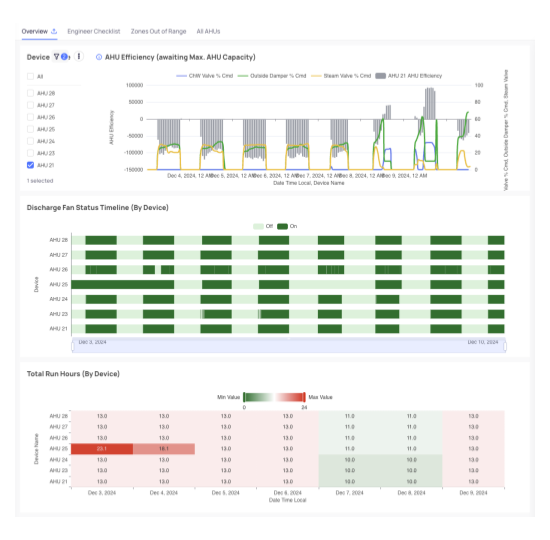
By connecting data to outcomes, KODE OS is revolutionizing how smart buildings operate, enabling teams like ours to deliver measurable impacts.
Data is the backbone behind smart buildings, driving innovations that transform traditional spaces into intelligent environments. By collecting, standardizing, and utilizing data, smart buildings can achieve a high level of efficiency, sustainability, and tenant satisfaction. As technologies evolve, data will continue to open new possibilities, reshaping the future of real estate, and platforms like KODE OS are the brain behind this transformation, helping buildings unlock their full potential.
To learn more about how KODE OS can transform your building operations through data-backed decision making, book a demo with our team.


